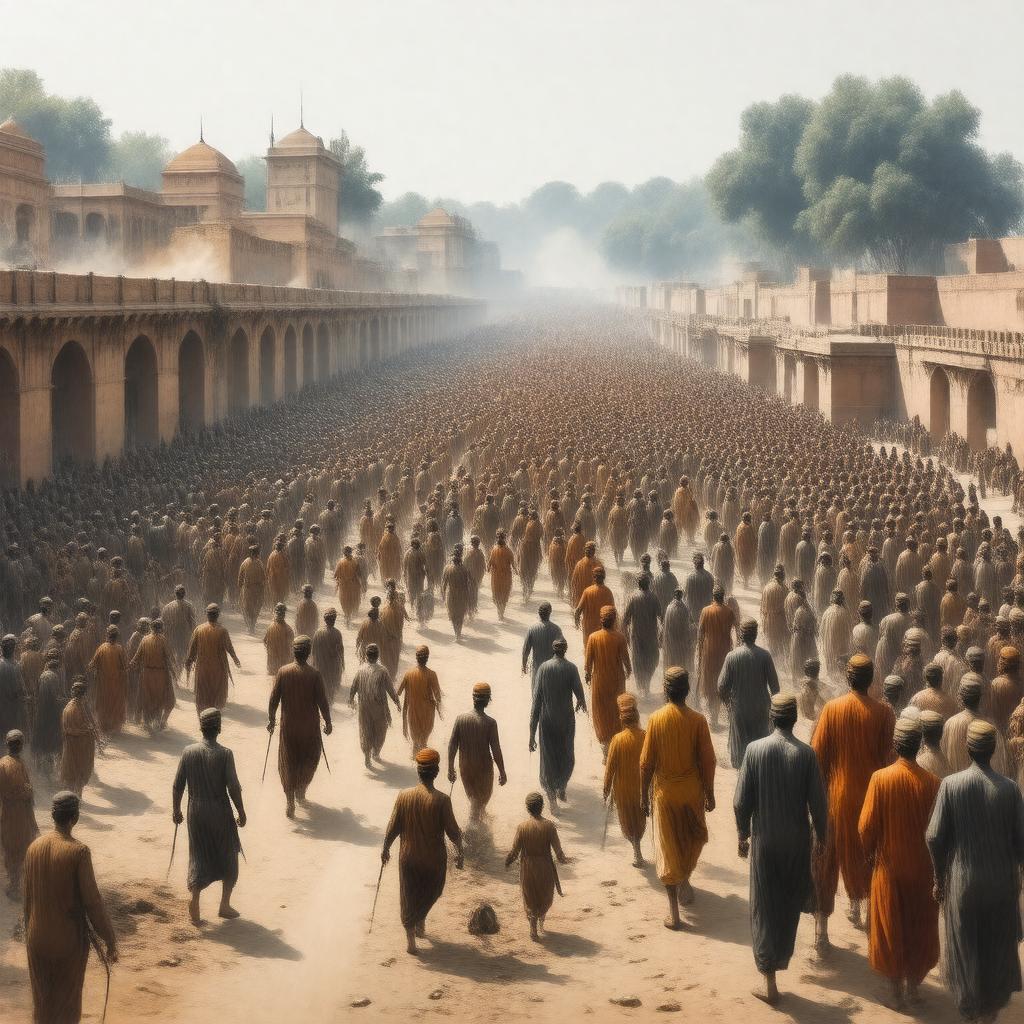Prompt
"Generate an image of a solemn and somber depiction of the Jallianwala Bagh massacre, which occurred on April 13, 1919, at Jallianwala Bagh in Amritsar, Punjab, British India. The scene should show a crowded, enclosed space with people running for their lives, and British Indian Army soldiers firing from the sides. The style should be realistic and evocative of a tragic event. Include elements that convey the chaos, fear, and violence of that day, which resulted in the deaths of hundreds of unarmed civilians, with over 1,000 injuries, and became a turning point in the Indian freedom struggle."

